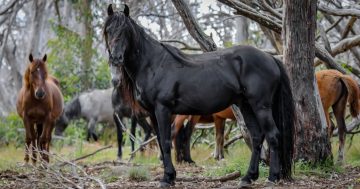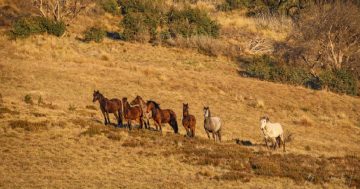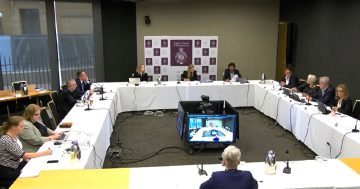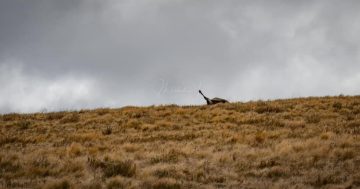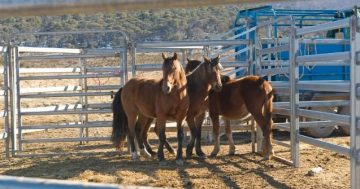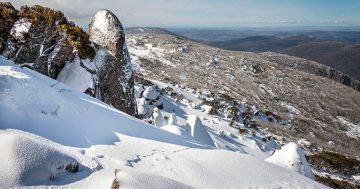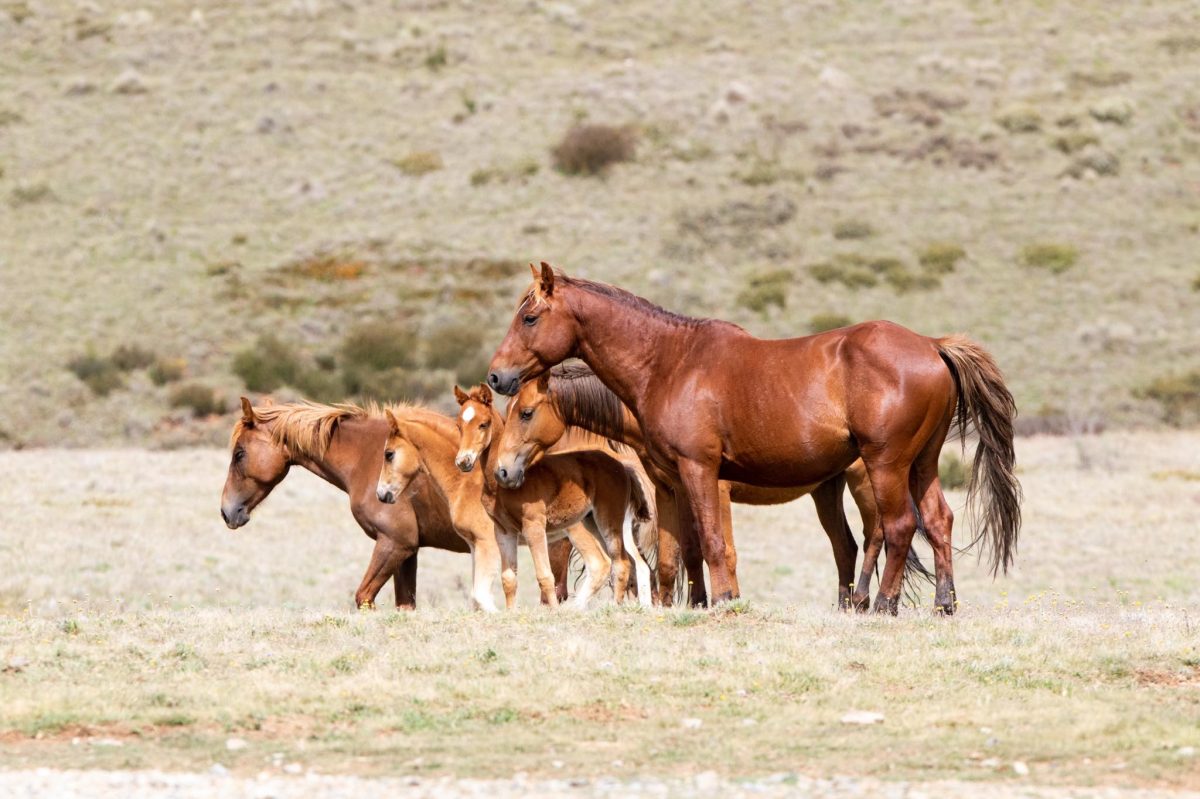
NSW Environment Minister Penny Sharp has been called on to stop the aerial shooting of the wild horses. Photo: Snowy Brumby Photography Adventures with Michelle and Ian.
An independent crowdfunded scientific survey of wild horse numbers in Kosciuszko National Park (KNP) has revealed just 569 horses in a section of the park the National Parks and Wildlife Service (NPWS) survey claims is populated by 10 times that amount.
The findings have prompted calls for the NSW Environment Minister Penny Sharp to cease aerial shooting of the wild horses – which commenced in the northern section of the park last month – pending further investigation.
Wild horse control is occurring in accordance with the KNP Wild Horse Heritage Management Plan (KNP WHHMP), which came into force in November 2021.
The NPWS maintains there is strong scientific evidence the wild horses damage the park’s fragile alpine and sub-alpine environment by trampling and grazing vegetation, eroding waterways and destroying key habitats for threatened species such as the northern corroboree frog and stocky galaxias fish.
Based on an October 2023 population survey, the NPWS says an estimated 12,934 to 22,536 wild horses, averaged out at 17,393 horses, inhabit the park, meaning that by law they must be reduced to 3000 by June 2027.
The remaining population will be kept in retention management areas reflective of the alpine region’s wild horse heritage values.
KNP wild horse population surveys are prepared on behalf of NPWS by Dr Stuart Cairns of the University of New England’s School of Environmental and Rural Science using a method called distance sampling.
These numbers have been widely challenged by locals, brumby advocates and independent biostatisticians who have suggested the population sits in the low thousands, prompting the independent survey which saw around $75,000 raised through public donations.
Using high resolution imagery taken from fixed wing aircraft as well as machine learning computer analytics and the latest artificial intelligence software, the new survey was undertaken by South Australian remote sensing and data analytics company, Airborne Logic.
The 24 February survey covered 212 sqkm of the open northern high plains – specifically Peppercorn, Cooinbil, Long, McPherson, Gooandra, Kiandra and Blanket Plains – which aligned with previous helicopter and manual (visual) counting of horses conducted by NPWS in similar climactic conditions.
Around 10,266 images of open country captured during the Airborne Logic flight were merged into a large map-quality image of the region.
Project coordinator Rocky Harvey said Airborne Logic reported initial visual scans identified a total 405 horses; 91 were machine detected and human image analysts found a subsequent 73 horses which, combined, led to a final count of 569.
Previous surveys and horse density assessments published by NPWS suggested this area contained more than 5000 horses.
“This is not just a backyard report; this uses best-of-kind technology to capture and analyse high-resolution imagery that discovered horses the human eye couldn’t see,” Mr Harvey said. “Stack that up against the NPWS survey assumptions, and it’s pretty difficult to dispute.
“Here the Minister is basing all her decisions on a distance sampling method she has, in the past, viewed with great skepticism,” he said, “and we present her with a more exact report and the numbers are not stacking up, not even close.”
Nationals MP Wes Fang agrees, saying the Airborne Logic figures sit in stark contrast with those presented by the Minister and the NPWS.
“By the looks of this the numbers of wild horses in Kosciuszko National Park are already well under the required 3000 and for the NSW Government to continue to push ahead with the aerial culling program given this revelation would be to ignore the clear scientific evidence presented in the Airborne Logic report,” Mr Fang said.
Mr Fang said the Minister always maintained she was driven by the science in relation to the stated population numbers in KNP and “here is clear empirical evidence, backed up with scientific analysis”.
“If she ignores this data, she will demonstrate her actions are based on ideology, not science.”
He said in the face of recent concerns around the wild horse rehoming program, which the Minister suspended last week pending a departmental investigation, the culling program should also stop.
“To have any credibility Penny Sharpe must cease the aerial culling program of brumbies immediately,” Mr Fang said.
The Minister told Region on Wednesday (1 May) that discussions about the KNP wild horse count method were ongoing.
“During last year’s consultation period, I facilitated meetings between the department and [independent biostatistician] Clare Galea to go through her alternative count method,” she said. “We took her suggestions seriously.
“The method was given to professors from two Australian universities, a QLD Government statistician and a CSIRO statistician to review. They concluded the method was less accurate than the current practice,” Ms Sharpe said.
She confirmed her office was reading and reviewing the final report Rocky Harvey had sent to her office and had also sent it to the department for advice.
“We are continuing with the current survey method but are always looking for improvements. This includes trialling drone technology and mark recapture distance sampling. We are committed to additional population control methods once the target is reached.”
She said the government recognised the importance of horses to the history and heritage of KNP and surrounds.
“That is why we’ll maintain a horse population of 3000, once we have reduced the numbers that are doing damage to the park,” she said.
Mr Harvey said he looked forward to the Minister commenting on the results.
“Despite the overwhelming evidence, it’s for the Minister, ignorance is bliss and presumably the Cairns methodology will be the backbone of her defence,” Mr Fang said.
“But we’re at the point now where the Minister needs to stop with the politics and if her actions see the end to the culturally iconic brumby, history will damn her for that,” he said.
Original Article published by Edwina Mason on About Regional.







